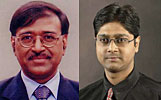
Don’t Make CJ, High Court, President, ITAT!
Shri M. A. Bakshi, Vice President (Retd), ITAT
The author is well known for his landmark judgements, several of which have been upheld by higher courts. The author now carefully ponders over the pros and cons of the controversial provision in DTC 2010 seeking to appoint a Chief Justice of the High Court as President of the Tribunal and concludes that it is a mis-conceived provision. The author also finds fault with the hurried manner in which the change is sought to be made.
Many suggestions made by professional bodies and Industry have been found meritorious and accepted and incorporated in the recently tabled Direct Tax Code Bill 2010. However in the Direct Tax Code Bill 2010 certain provisions relating to the INCOME-TAX APPELLATE TRIBUNAL have been incorporated which were not in the earlier draft and therefore we do not have the benefit of any intelligent or meaningful debate in the hands of stake holders. The professional bodies such as trade associations, chambers of commerce and industry, Bar associations , lawyers, chartered accountants etc are yet to come out with their opinions on these provisions but I assume, considering the importance of these provisions, the Bar associations connected with ITAT at least are debating them and may come out with their view point shortly.






